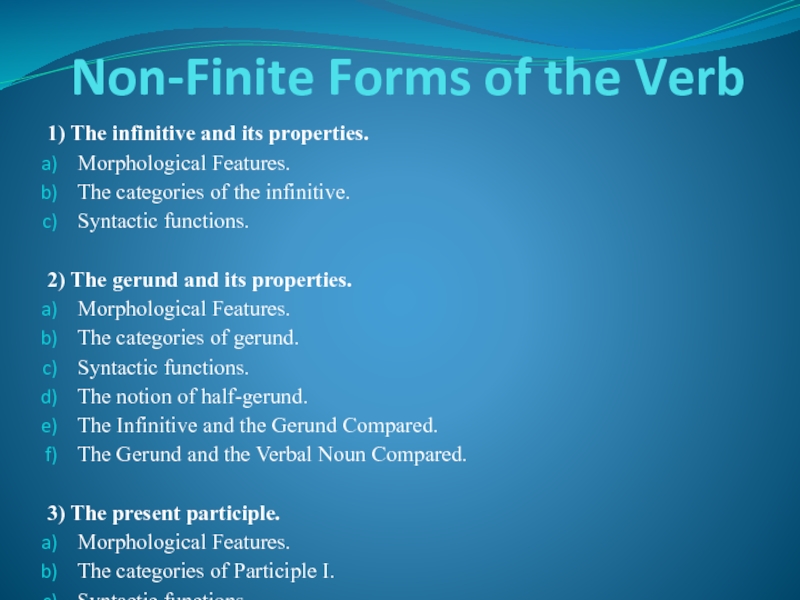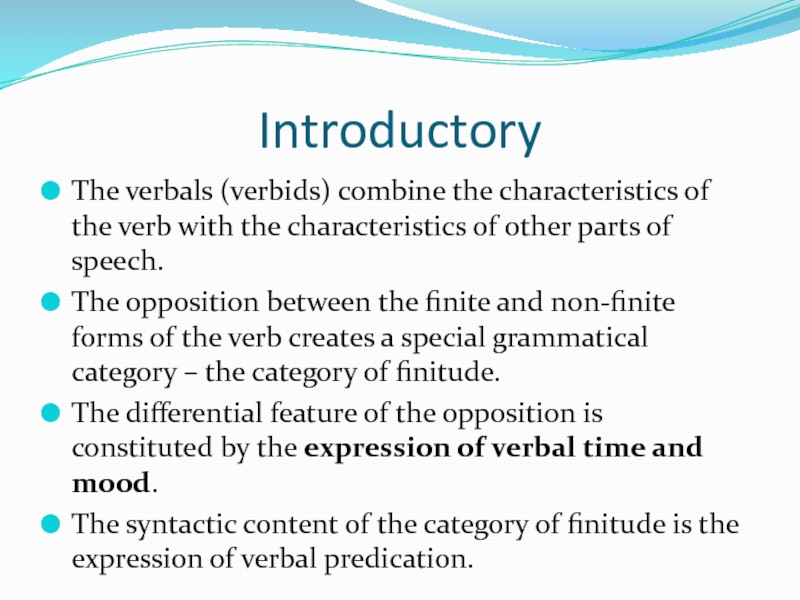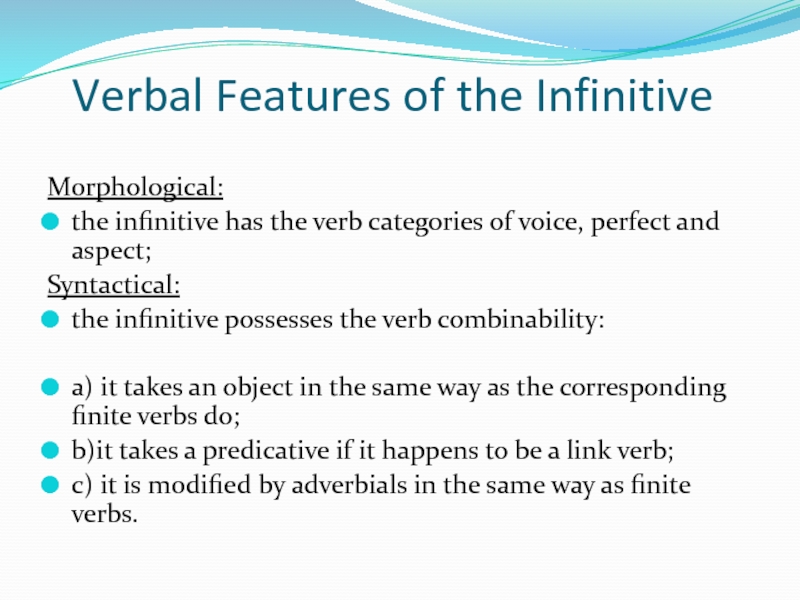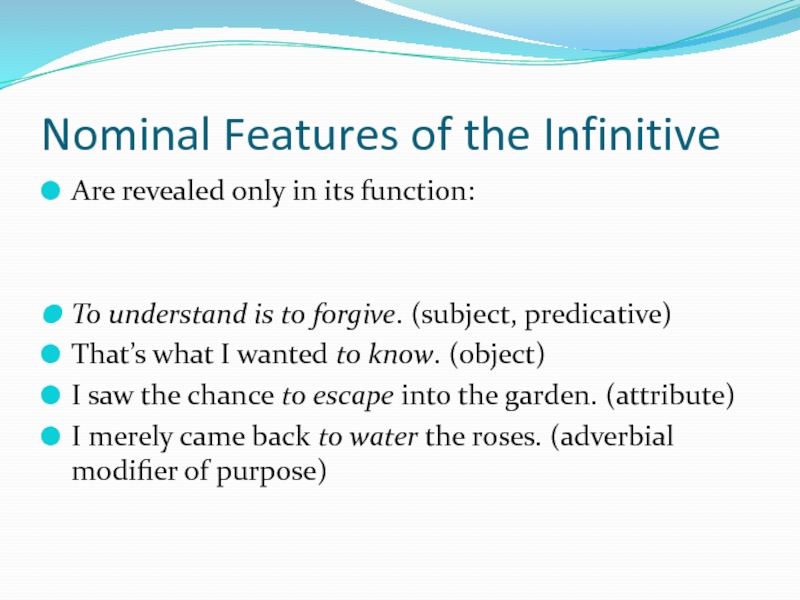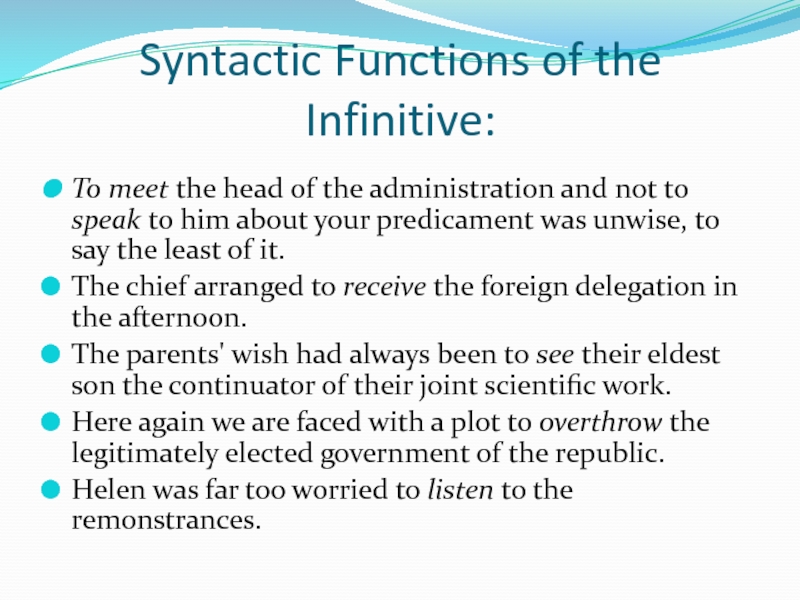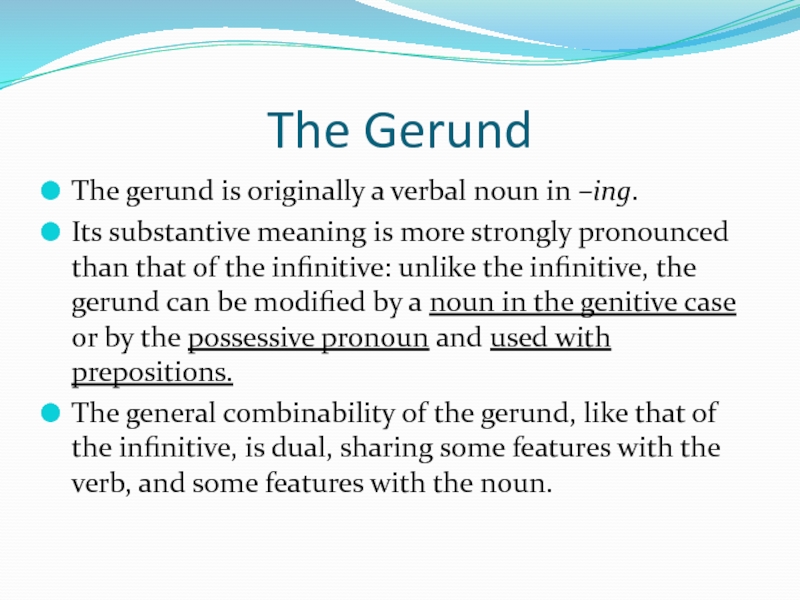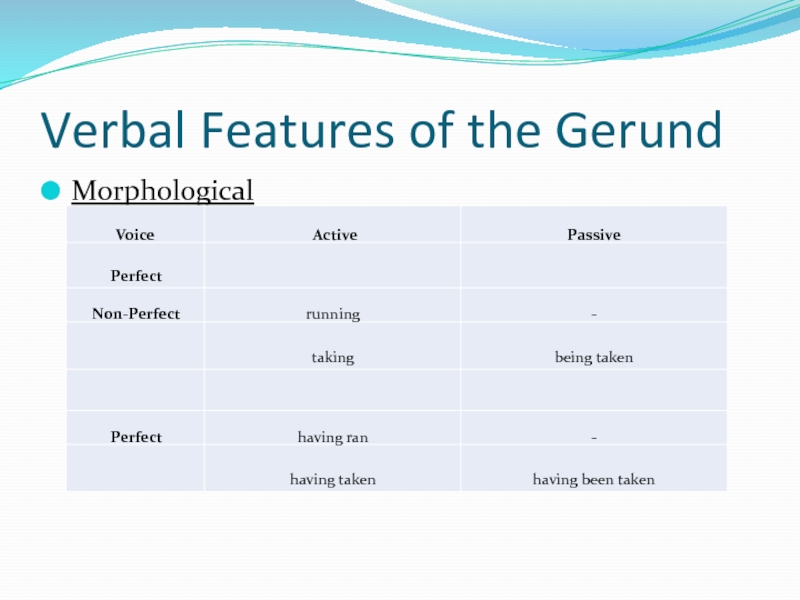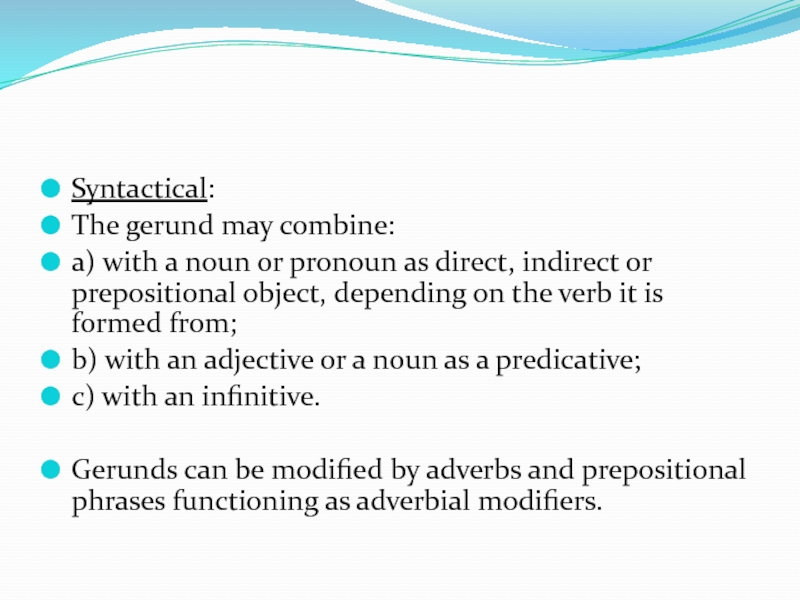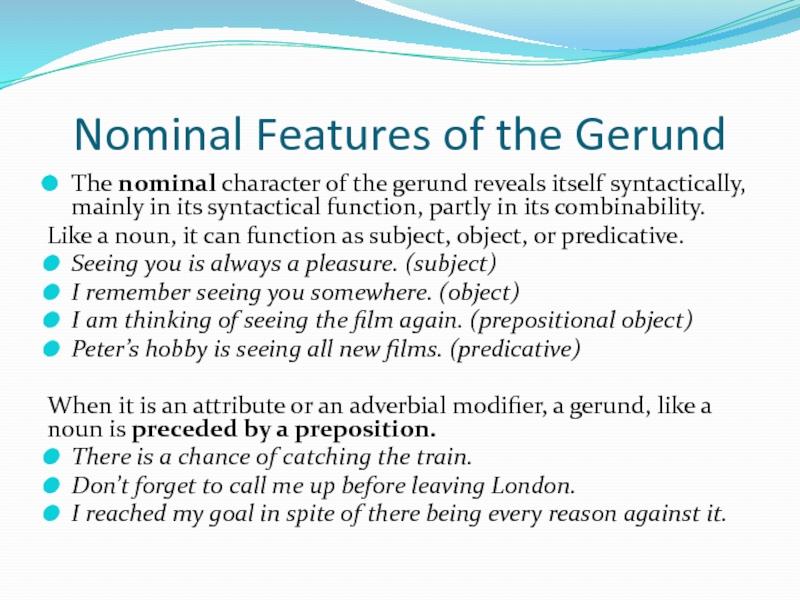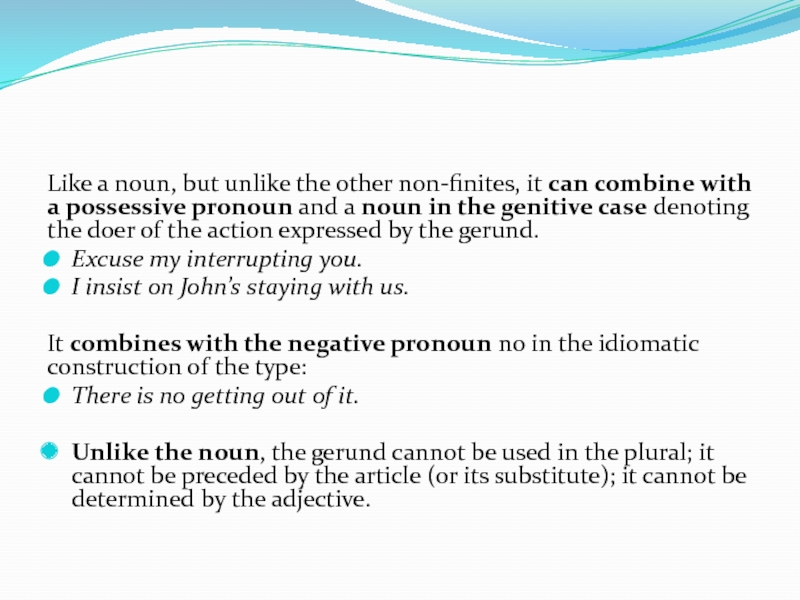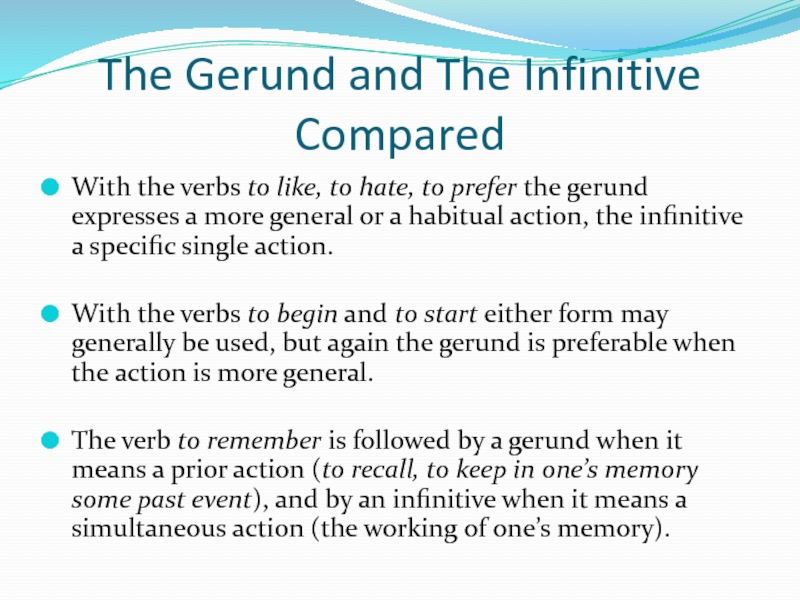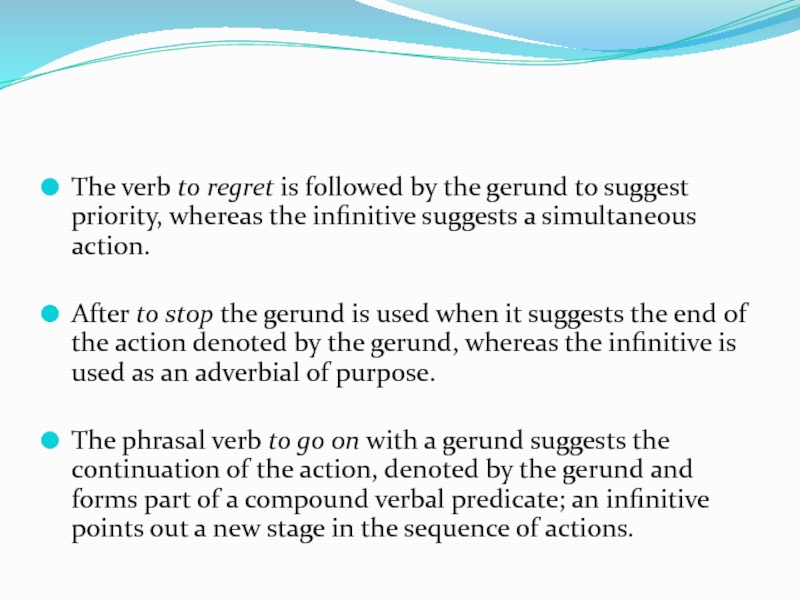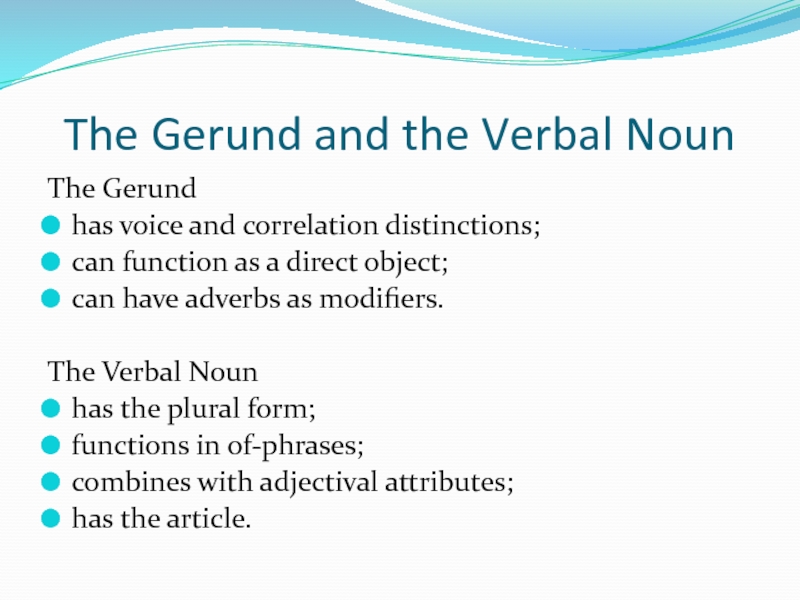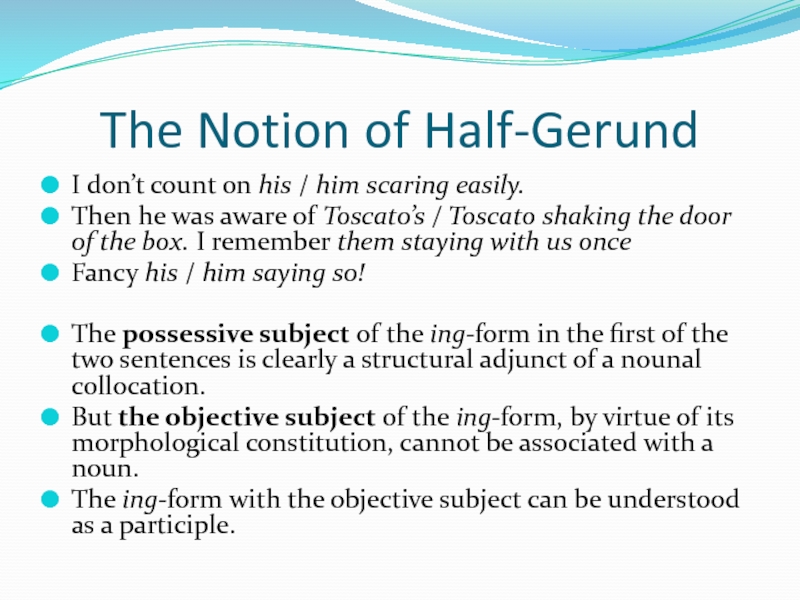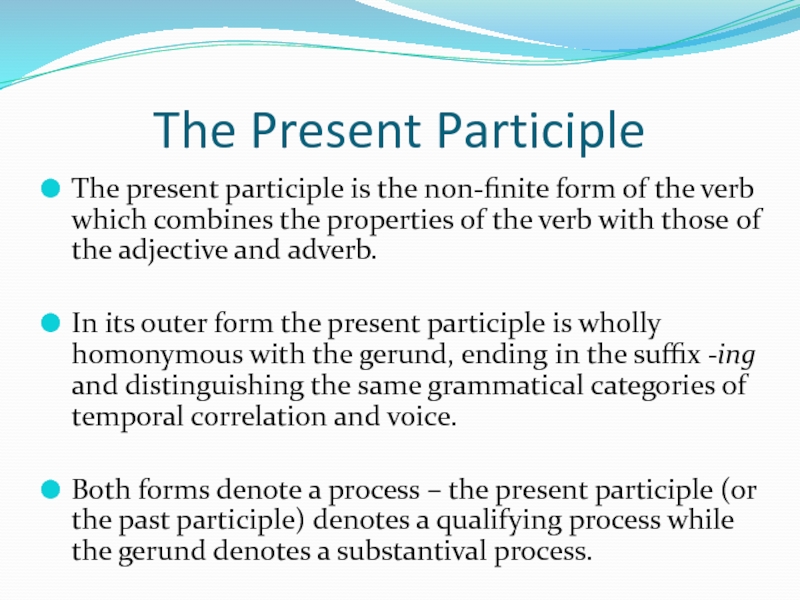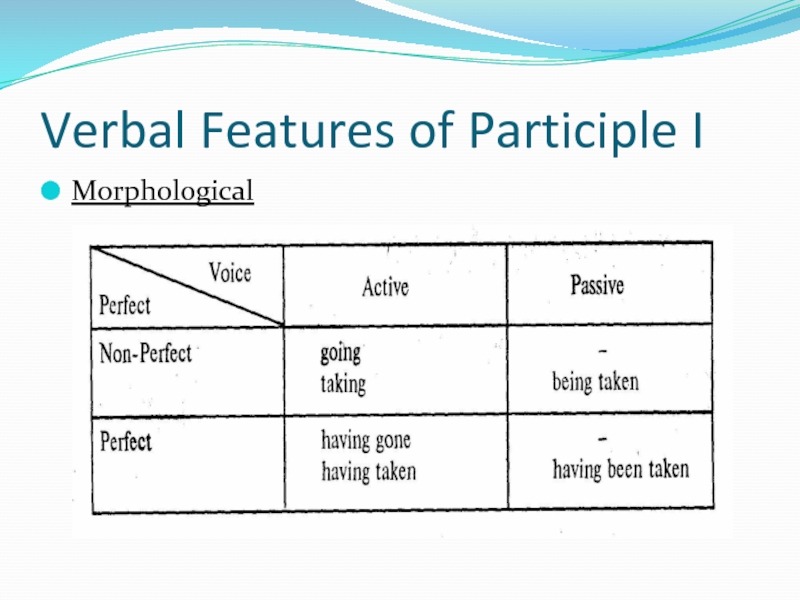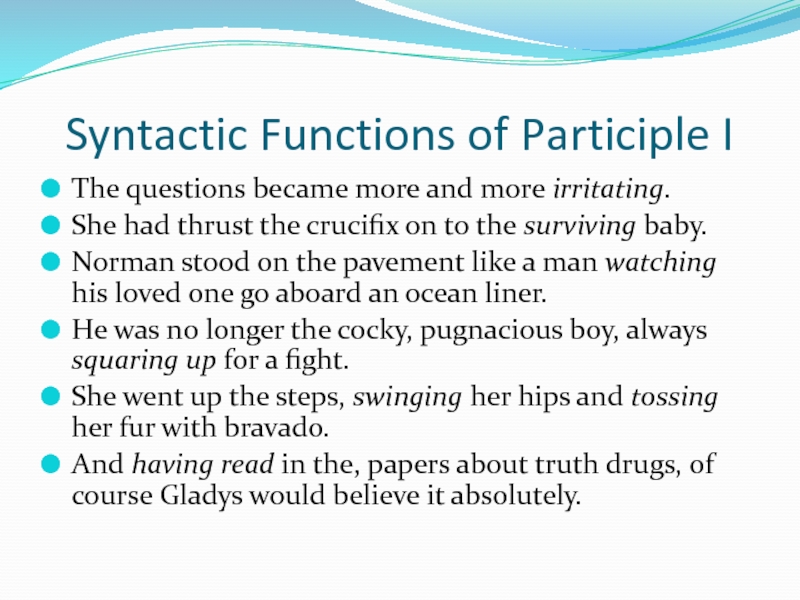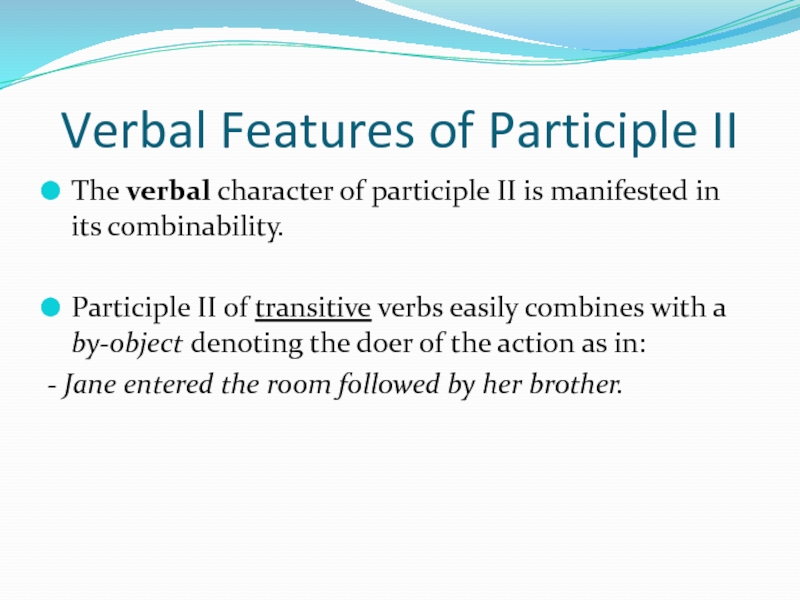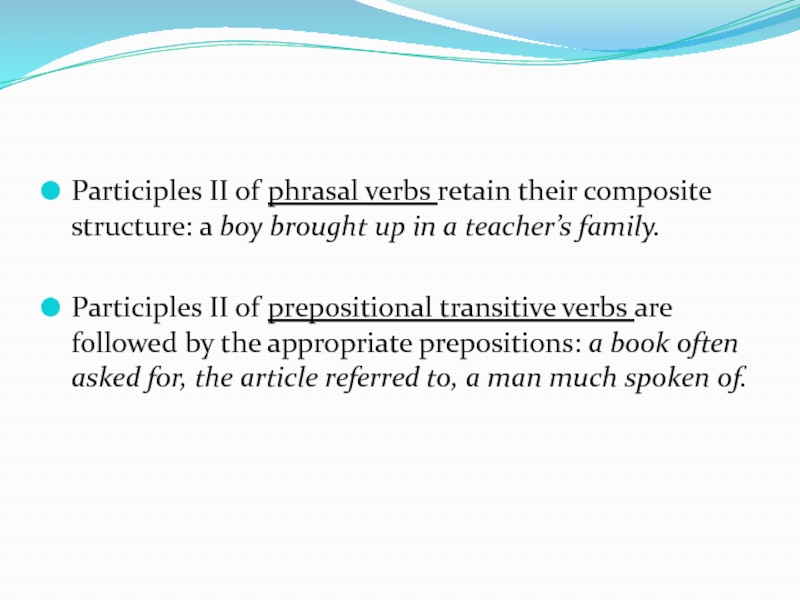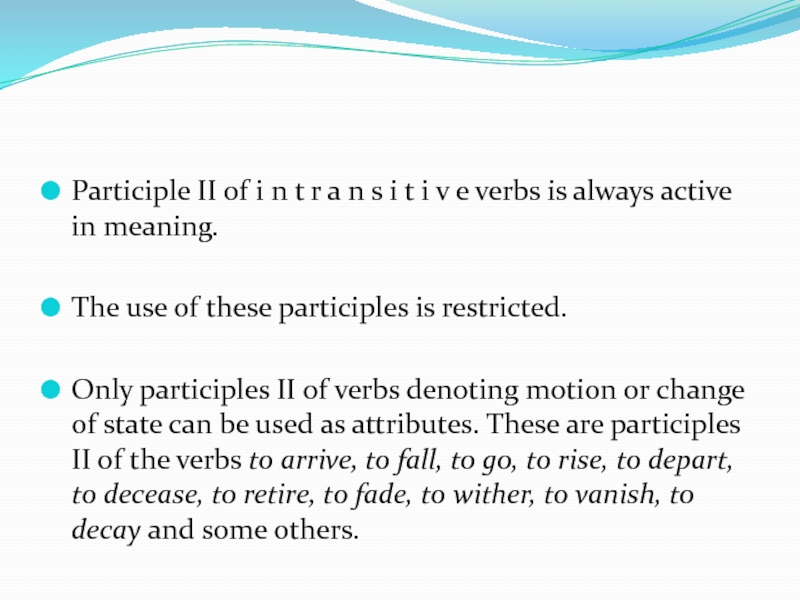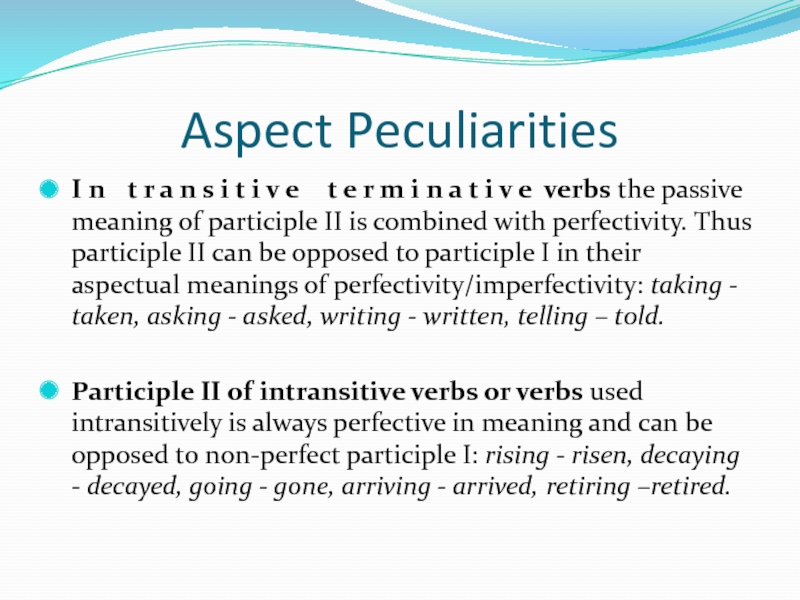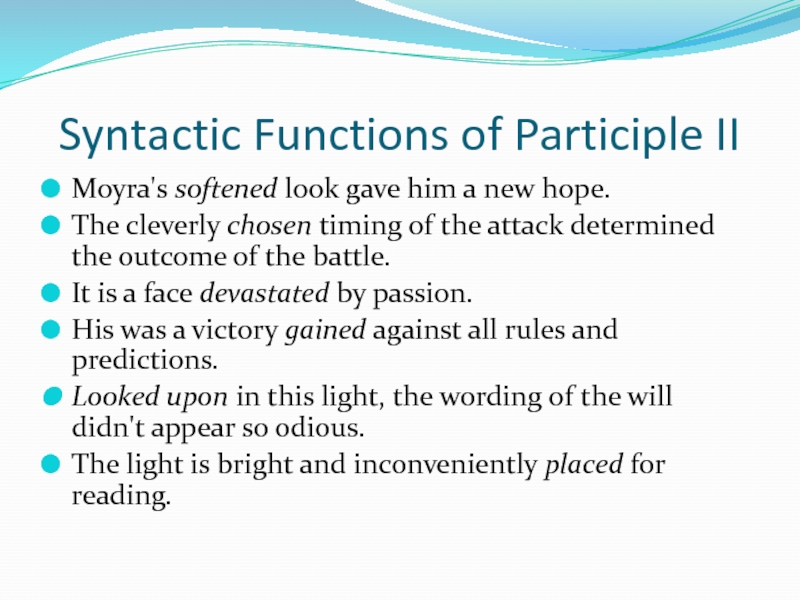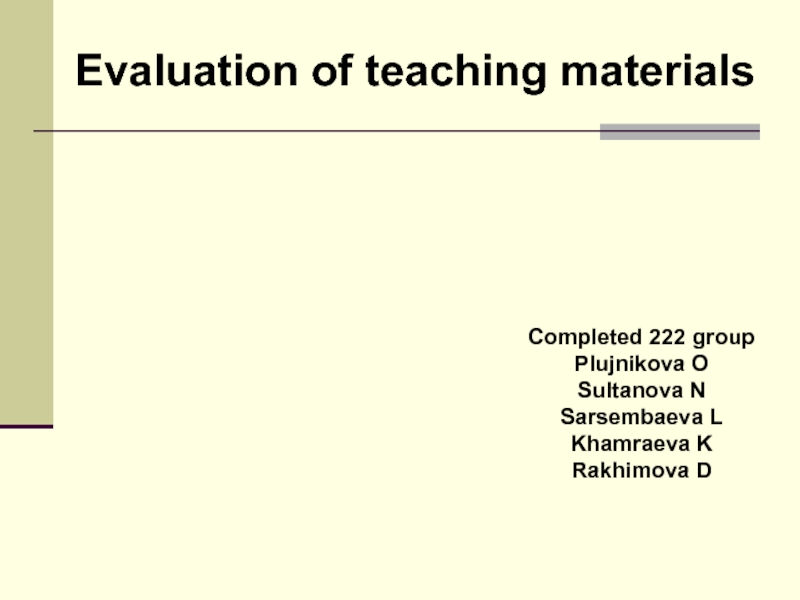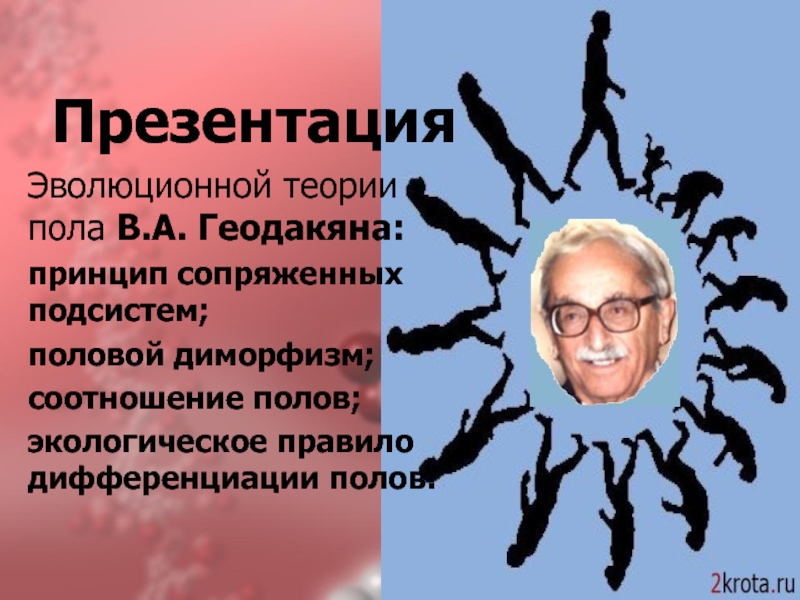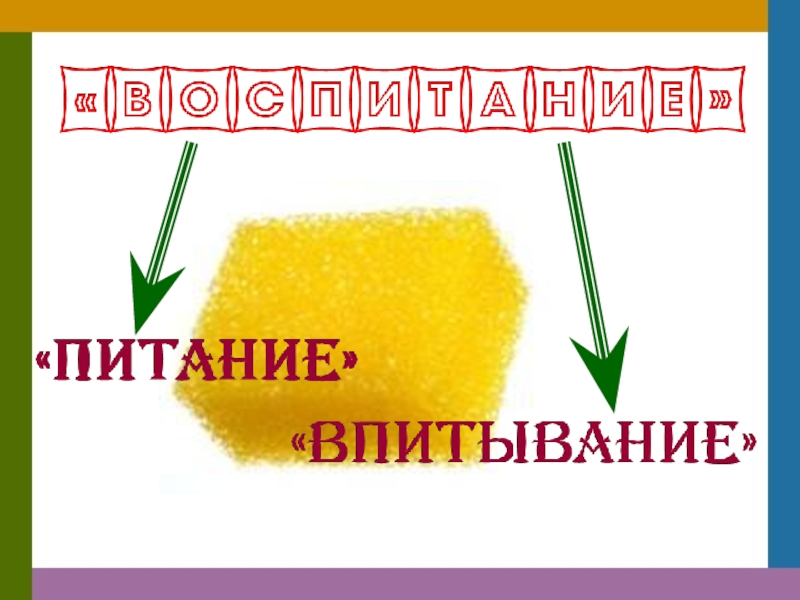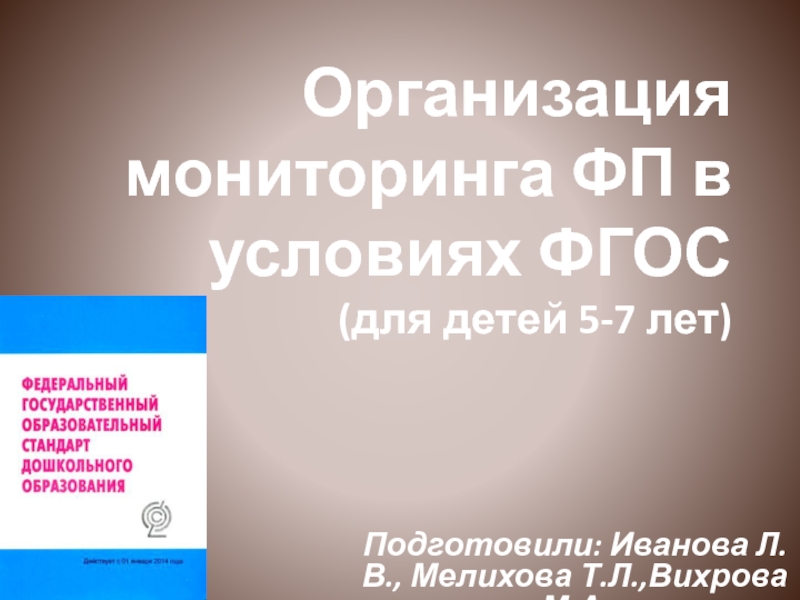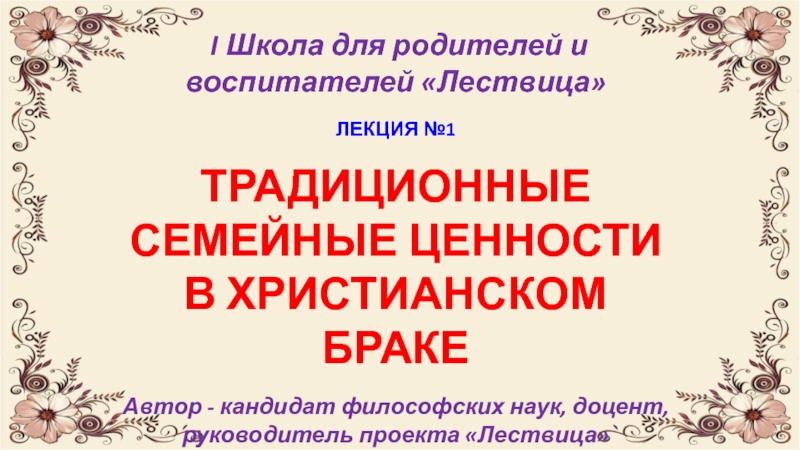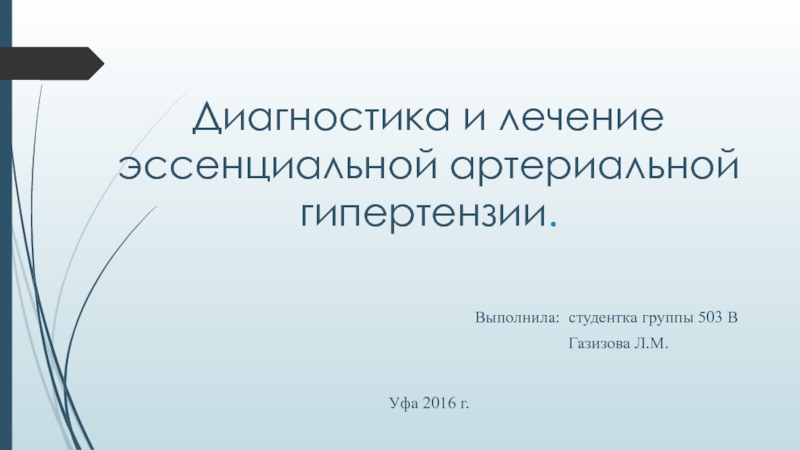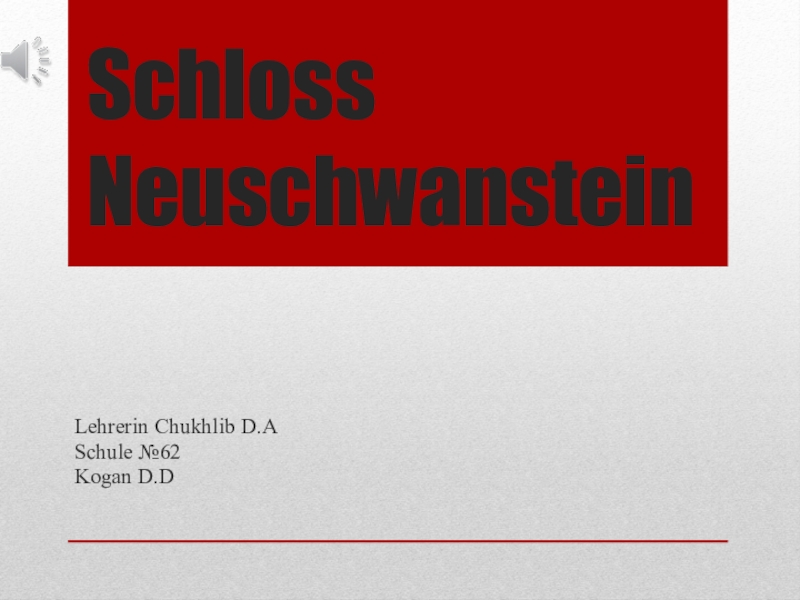Слайд 1Non-Finite Forms of the Verb
1) The infinitive and its properties.
Morphological Features.
The categories of the infinitive.
Syntactic functions.
2) The
gerund and its properties.
Morphological Features.
The categories of gerund.
Syntactic functions.
The notion of half-gerund.
The Infinitive and the Gerund Compared.
The Gerund and the Verbal Noun Compared.
3) The present participle.
Morphological Features.
The categories of Participle I.
Syntactic functions.
The Gerund and Participle I Compared.
4) The Past participle.
Morphological Features.
Voice and Aspect Meaning of Participle II.
Syntactic functions.
Слайд 2Introductory
The verbals (verbids) combine the characteristics of the verb with
the characteristics of other parts of speech.
The opposition between the
finite and non-finite forms of the verb creates a special grammatical category – the category of finitude.
The differential feature of the opposition is constituted by the expression of verbal time and mood.
The syntactic content of the category of finitude is the expression of verbal predication.
Слайд 3The Infinitive
The infinitive is historically a verbal noun.
The infinitive is
treated as the head-form of the whole paradigm of the
verb.
The infinitive has two presentation forms: marked and unmarked.
The infinitive combines the properties of the verb with those of the noun.
Слайд 4Verbal Features of the Infinitive
Morphological:
the infinitive has the verb categories
of voice, perfect and aspect;
Syntactical:
the infinitive possesses the verb
combinability:
a) it takes an object in the same way as the corresponding finite verbs do;
b)it takes a predicative if it happens to be a link verb;
c) it is modified by adverbials in the same way as finite verbs.
Слайд 5Nominal Features of the Infinitive
Are revealed only in its function:
To
understand is to forgive. (subject, predicative)
That’s what I wanted to
know. (object)
I saw the chance to escape into the garden. (attribute)
I merely came back to water the roses. (adverbial modifier of purpose)
Слайд 7Syntactic Functions of the Infinitive:
To meet the head of the
administration and not to speak to him about your predicament
was unwise, to say the least of it.
The chief arranged to receive the foreign delegation in the afternoon.
The parents' wish had always been to see their eldest son the continuator of their joint scientific work.
Here again we are faced with a plot to overthrow the legitimately elected government of the republic.
Helen was far too worried to listen to the remonstrances.
Слайд 8The Gerund
The gerund is originally a verbal noun in –ing.
Its substantive meaning is more strongly pronounced than that of
the infinitive: unlike the infinitive, the gerund can be modified by a noun in the genitive case or by the possessive pronoun and used with prepositions.
The general combinability of the gerund, like that of the infinitive, is dual, sharing some features with the verb, and some features with the noun.
Слайд 9Verbal Features of the Gerund
Morphological
Слайд 10Syntactical:
The gerund may combine:
a) with a noun or pronoun
as direct, indirect or prepositional object, depending on the verb
it is formed from;
b) with an adjective or a noun as a predicative;
c) with an infinitive.
Gerunds can be modified by adverbs and prepositional phrases functioning as adverbial modifiers.
Слайд 11Nominal Features of the Gerund
The nominal character of the gerund
reveals itself syntactically, mainly in its syntactical function, partly in
its combinability.
Like a noun, it can function as subject, object, or predicative.
Seeing you is always a pleasure. (subject)
I remember seeing you somewhere. (object)
I am thinking of seeing the film again. (prepositional object)
Peter’s hobby is seeing all new films. (predicative)
When it is an attribute or an adverbial modifier, a gerund, like a noun is preceded by a preposition.
There is a chance of catching the train.
Don’t forget to call me up before leaving London.
I reached my goal in spite of there being every reason against it.
Слайд 12Like a noun, but unlike the other non-finites, it can
combine with a possessive pronoun and a noun in the
genitive case denoting the doer of the action expressed by the gerund.
Excuse my interrupting you.
I insist on John’s staying with us.
It combines with the negative pronoun no in the idiomatic construction of the type:
There is no getting out of it.
Unlike the noun, the gerund cannot be used in the plural; it cannot be preceded by the article (or its substitute); it cannot be determined by the adjective.
Слайд 13Syntactic Functions of the Gerund
Repeating your accusations over and over
again doesn't make them more convincing.
No wonder he delayed
breaking the news to Uncle Jim.
She could not give her mind to pressing wild flowers in Pauline's botany book.
Joe felt annoyed at being shied by his room-mates.
You know what luck is? Luck is believing you're lucky.
Fancy the pleasant prospect of listening to all the gossip they've in store for you!
He could not push against the furniture without bringing the whole lot down.
Слайд 14The Gerund and The Infinitive Compared
With the verbs to like,
to hate, to prefer the gerund expresses a more general
or a habitual action, the infinitive a specific single action.
With the verbs to begin and to start either form may generally be used, but again the gerund is preferable when the action is more general.
The verb to remember is followed by a gerund when it means a prior action (to recall, to keep in one’s memory some past event), and by an infinitive when it means a simultaneous action (the working of one’s memory).
Слайд 15The verb to regret is followed by the gerund to
suggest priority, whereas the infinitive suggests a simultaneous action.
After to
stop the gerund is used when it suggests the end of the action denoted by the gerund, whereas the infinitive is used as an adverbial of purpose.
The phrasal verb to go on with a gerund suggests the continuation of the action, denoted by the gerund and forms part of a compound verbal predicate; an infinitive points out a new stage in the sequence of actions.
Слайд 16The Gerund and the Verbal Noun
The Gerund
has voice and
correlation distinctions;
can function as a direct object;
can have adverbs as
modifiers.
The Verbal Noun
has the plural form;
functions in of-phrases;
combines with adjectival attributes;
has the article.
Слайд 17The Notion of Half-Gerund
I don’t count on his / him
scaring easily.
Then he was aware of Toscato’s / Toscato shaking
the door of the box. I remember them staying with us once
Fancy his / him saying so!
The possessive subject of the ing-form in the first of the two sentences is clearly a structural adjunct of a nounal collocation.
But the objective subject of the ing-form, by virtue of its morphological constitution, cannot be associated with a noun.
The ing-form with the objective subject can be understood as a participle.
Слайд 18The Present Participle
The present participle is the non-finite form of
the verb which combines the properties of the verb with
those of the adjective and adverb.
In its outer form the present participle is wholly homonymous with the gerund, ending in the suffix -ing and distinguishing the same grammatical categories of temporal correlation and voice.
Both forms denote a process – the present participle (or the past participle) denotes a qualifying process while the gerund denotes a substantival process.
Слайд 19Verbal Features of Participle I
Morphological
Слайд 20Syntactical. It can combine:
a) with a noun or a pronoun
as direct, indirect or prepositional object;
b) with an adverb
or a prepositional phrase as an adverbial modifier;
c) with a noun or adjective as a predicative.
Слайд 21Adjectival and Adverbial Features of Participle I
Are manifested in its
syntactical functions as an attribute and an adverbial modifier:
Arriving at
the station, she saw him at once, leaning agains the railing.
Like an adjective, participle I forms adverbs with the suffix -ly: laughingly, jokingly, surprisingly, admiringly, appealingly, feelingly.
Слайд 22Syntactic Functions of Participle I
The questions became more and more
irritating.
She had thrust the crucifix on to the surviving baby.
Norman
stood on the pavement like a man watching his loved one go aboard an ocean liner.
He was no longer the cocky, pugnacious boy, always squaring up for a fight.
She went up the steps, swinging her hips and tossing her fur with bravado.
And having read in the, papers about truth drugs, of course Gladys would believe it absolutely.
Слайд 23Participle I and the Gerund Compared
As predicative participle I gives
qualitative characteristics to the subject, thus tending towards an adjective.
When
a gerund or a participle is used as an attribute, the difference between them lies in the absence or presence of the preposition, also in their relationship to the modified noun. Participle I denotes an action that the person or thing performs or experiences.
Слайд 24When used as an adverbial modifier, the gerund is more
varied in its application than the participle because it is
used with different prepositions.
Слайд 25The Past Participle
The past participle is the non-finite form
of the verb which combines the properties of the verb
with those of the adjective, serving as the qualifying-processual name.
Unlike the present participle, it has no paradigm of its own.
Слайд 26Adjectival Features of Participle II
Manifest themselves in its function in
the sentence, usually that of either attribute or predicative.
It
may combine with adverbs of degree typical of adjectives, such as very, too, slightly, so, much, more, as in:
I am very pleased with you.
The children were too excited to notice the newcomer.
Similar to adjectives and participle I, participle II may form adverbs with the help of the suffix -ly: fixedly, unhurriedly, admittedly.
Слайд 27Verbal Features of Participle II
The verbal character of participle II
is manifested in its combinability.
Participle II of transitive verbs
easily combines with a by-object denoting the doer of the action as in:
- Jane entered the room followed by her brother.
Слайд 28Participles II of phrasal verbs retain their composite structure: a
boy brought up in a teacher’s family.
Participles II of
prepositional transitive verbs are followed by the appropriate prepositions: a book often asked for, the article referred to, a man much spoken of.
Слайд 29Ditransitive verbs keep their second object as in:
That was
the main question asked her at the wedding.
Participle II
may be accompanied by an adverbial modifier expressed by adverbs or phrases combining with verbs: a house built two years before, man hidden in the bush, a play well acted, a story long forgotten.
Слайд 30Voice Peculiarities
The passive meaning of participle II may be of
three types:
1) denoting an action directed towards the person or
non-person expressed by the subject or object.
- Spanish is one of the foreign languages taught at our Institute.
2) denoting a state, which is the result of an action.
- The problem is solved. The door is shut.
3) denoting a pure state.
- I felt annoyed when he refused to help me.
Слайд 31Participle II of i n t r a n s
i t i v e verbs is always active in
meaning.
The use of these participles is restricted.
Only participles II of verbs denoting motion or change of state can be used as attributes. These are participles II of the verbs to arrive, to fall, to go, to rise, to depart, to decease, to retire, to fade, to wither, to vanish, to decay and some others.
Слайд 32Aspect Peculiarities
I n t r a n s i t i
v e t e r m i n a t i
v e verbs the passive meaning of participle II is combined with perfectivity. Thus participle II can be opposed to participle I in their aspectual meanings of perfectivity/imperfectivity: taking - taken, asking - asked, writing - written, telling – told.
Participle II of intransitive verbs or verbs used intransitively is always perfective in meaning and can be opposed to non-perfect participle I: rising - risen, decaying - decayed, going - gone, arriving - arrived, retiring –retired.
Слайд 33Syntactic Functions of Participle II
Moyra's softened look gave him a
new hope.
The cleverly chosen timing of the attack determined
the outcome of the battle.
It is a face devastated by passion.
His was a victory gained against all rules and predictions.
Looked upon in this light, the wording of the will didn't appear so odious.
The light is bright and inconveniently placed for reading.
Слайд 34Participle II may serve as an adverbial modifier of:
time, usually
with the conjunction when or until:
He is very affable when
spoken to, but naturally silent.
reason:
Deprived of his wife and son by the Spanish adventure, Jolyon found the solitude at Robin Hill intolerable.
condition, mostly with the conjunction if or unless:
I shall certainly give evidence on your behalf, if required.
Слайд 35concession, with the conjunction though or although:
Though asked in disarming
sociability, Haldone’s question was loaded.
comparison, with the conjunction as if
or as though:
“I get off the train,” he repeated as if hypnotized.
